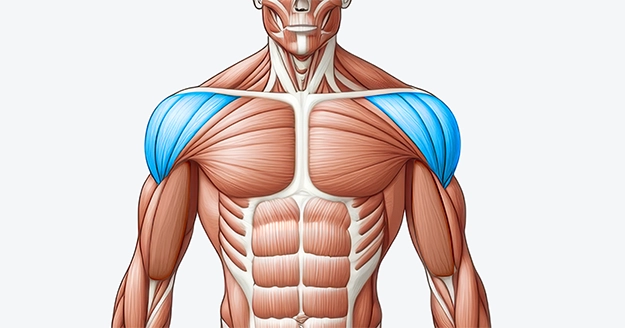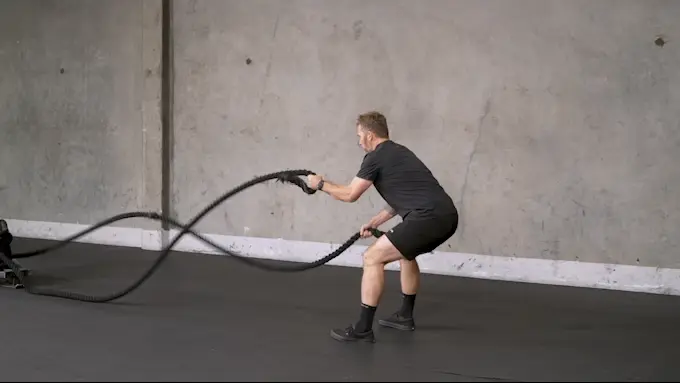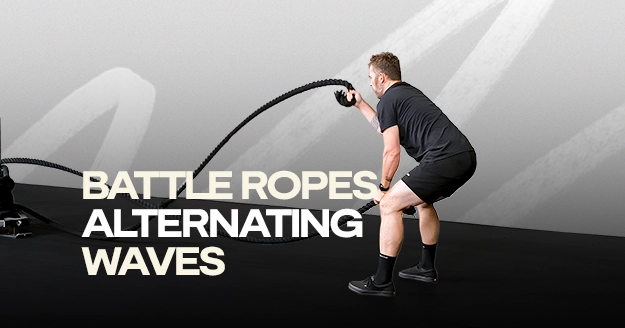Exercise Profile
Battle Ropes Alternating Wave Overview
Battle Ropes Alternating Waves is a dynamic full-body exercise that builds power, endurance, and coordination. This movement primarily targets the shoulders, arms, and core while engaging the lower body to maintain stability.
This highly adaptable exercise makes it an excellent choice for various fitness levels and goals. Beginners can perform it slower with lighter ropes to build foundational strength and endurance, while advanced individuals can increase intensity by using heavier ropes or incorporating faster, more powerful movements.
Its flexibility allows it to be utilized in many training routines, including high-intensity interval training (HIIT), circuit training, or standalone conditioning sessions.

Battle Ropes Alternating Wave Instructions
Step 1: Position your feet slightly wider than shoulder-width apart. Hold a battle rope in each hand, palms facing each other, in front of your hips.
Step 2: Keep your knees bent and your hips pushed back while keeping your chest high. Ensure your knees align with your toes and your core and glutes are engaged.
Step 3: Keeping tension in your arms, raise one arm quickly while lowering the other, moving both ropes up and down together.
Step 4: Then, without pausing, immediately perform the opposite of each motion.
Step 5: Continue alternating until you create waves with the battle ropes. Maintain your breathing.

Common Battle Ropes Alternating Wave Variations
These variations add diversity to workouts, allowing you to target specific muscle groups or intensify the cardiovascular challenge:
Battle Ropes Alternating Wave Tips
- Engage your core to prevent excessive swaying or loss of balance.
- Begin with lighter ropes or shorter sessions to develop technique and build endurance before progressing to heavier ropes or higher intensity.
- Aim for consistent waves rather than speed at first. Once you master the movement, increase the intensity for a more challenging workout.
Battle Ropes Alternating Wave Common Mistakes
- Standing Too Upright: Neglecting a slight bend in the knees and hips can lead to poor balance and increase the risk of strain on the lower back.
- Overextending the Arms: Arms reaching too far forward or elbow locking can cause joint tension and reduce the range of motion.
- Holding the Ropes Too Tightly: Gripping the ropes excessively can cause unnecessary tension in the hands and forearms.
Frequently Asked Questions
What’s the difference between alternating waves and double waves?
Alternating waves involve moving each arm independently, while double waves use both arms simultaneously. Alternating waves are better for coordination and unilateral strength, whereas double waves focus on explosive power.
How does this exercise improve cardio fitness?
The continuous, high-intensity movements elevate your heart rate, improving cardiovascular endurance and stamina.
Do I need heavy ropes to see results?
Not necessarily. Rope thickness and weight can be adjusted based on your fitness level. Proper form and consistent effort are more important than rope size.
Post your post-workout selfies in IG and tag @trainestapp, #trainest, or DM them to us to get a shoutout on Trainest Stories!


